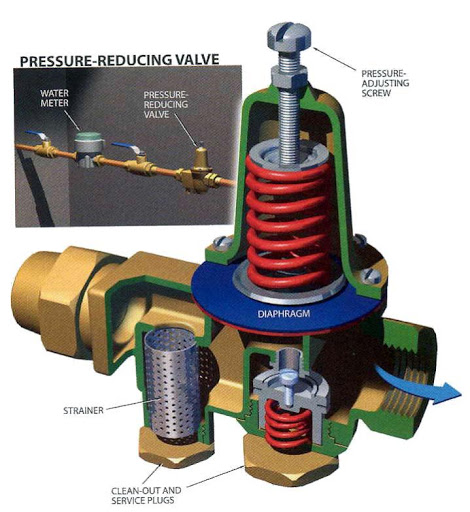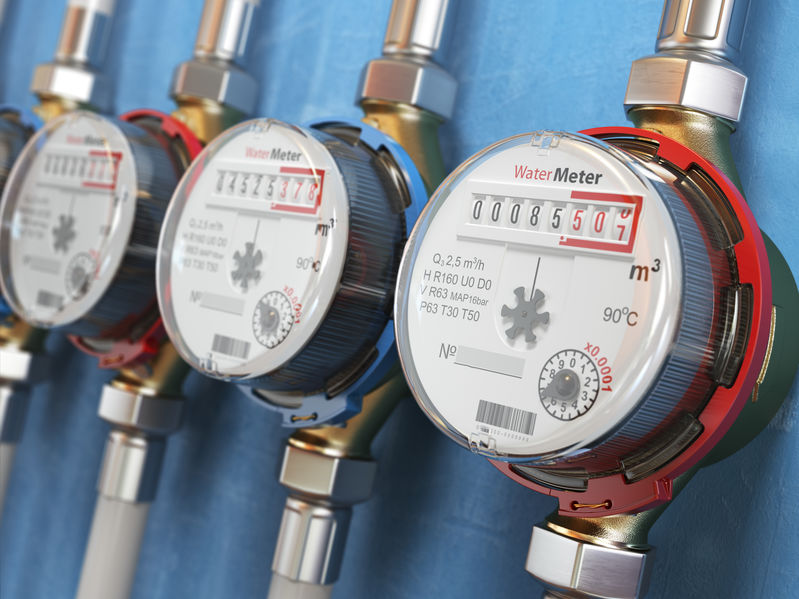A water line break is the last thing you want to come home to after a hard day at work. You’re tired, you likely don’t know where to start in getting help, and you imagine its going to be expensive to repair.
The tough thing about this situation is that inaction can lead to more damage and higher cost. With this guide, we aim to give you a few tips to help you kick into gear quickly and take preventative measures – or if the situation gets to the point of being the “worst case scenario.”
The Mechanics of Your Water Line
The first things you’ll want to know about your water line, is that it has a few different mechanisms that make it work properly. They’re usually not difficult to identify and knowing where they are could save you valuable time and hard-earned cash.

- The water main is the “main” pipeline that connects your home to the public water supply. It typically connects at the public water supply in the street, runs under ground to the house, and connects to the home’s exterior shutoff valve, regulator, and meter system.
- The water shutoff valve is the lever that shuts off the water entering the house. A home will usually have one or two of these found on the property’s exterior and marked or labeled in blue. In some cases valves can even be found at the sidewalk inside of a protective, concrete box.
- The water regulator allows the water pressure coming into the house to be reduced so that pipes inside the home are not exposed to possible damage from overwhelming their capacity.
- The water meter is a device connected to the water main that allows us to measure the volume of water going into a given property. It is suggested that reading the meter for a week (daily) to get a good sense of how much water you use on an average day is a good idea. That way if a significant increase begins to occur, you know that something is off. The number of gallons used can be monitored from the meter’s dial.
Be Aware of Potential Problems with Your Water line

Now that you know the mechanics of your water line, it’s time to assess why you may need to replace it. There are many clues that may lead you to deciding to get your water line checked out. If you know what to look for, you can detect a problem early and takes steps to take care of it – saving yourself both time and money.
Water leaks are unfortunately common, and it’s likely that your home will experience at least one leak during its lifetime. Keep these tips in mind, and you’ll come out better on the other side of a leak incident (not if, but) when it happens.
Listed here are five signs that you may need to call a professional and have your water line replaced:
- If you’re constantly hearing water running through the pipes when the water is not turned on, you probably have a problem. Likewise whistling, banging, or clanking sounds from the pipes can underscore that there is a problem.
- Low water pressure that gets increasingly worse over time is often an indicator that there is a leak in your water line.
- Damp drywall or wet spots in walls, floors, ceilings, and even yards are a huge indicator that something is wrong.
- Water in the street around your property line: ruptured pipes often bubble up into the street through cracks and other compromised areas of pavement.
- Unusually high water bills are one of the most common signs that you have a leak. Your water meter can tell you if your usage has gone awry and so can significant increases in your bill. Check the meter to see if it is continually running when water is not being used.
It will be better for your property and your pocketbook if you catch these issues during the early signs of trouble.
Reaching Out To Plumbing Experts

Pay attention to these warning signs, and reach out to a reputable plumber who has a wealth of experience and proper licensing to work on water line issues that may require work in the public right of way (i.e., the sidewalk or the street).
For help in understanding your water line problems or to get more information on trenchless water line replacements contact the experts at Pipe Spy Oakland.

